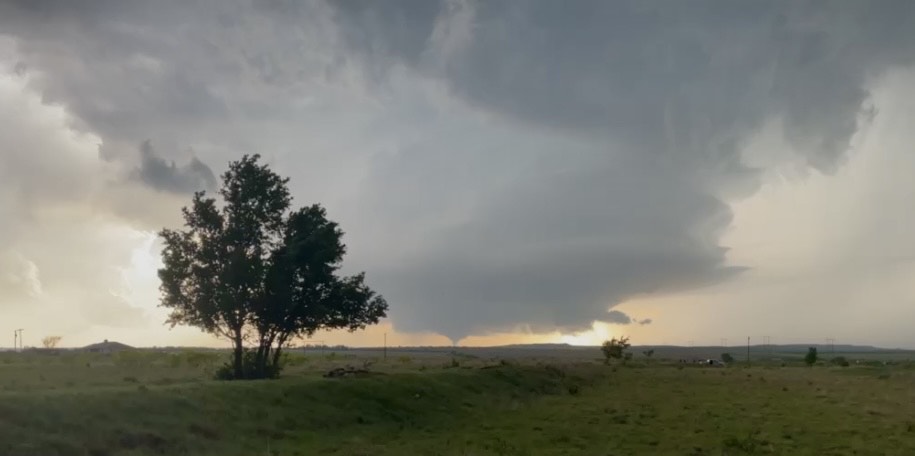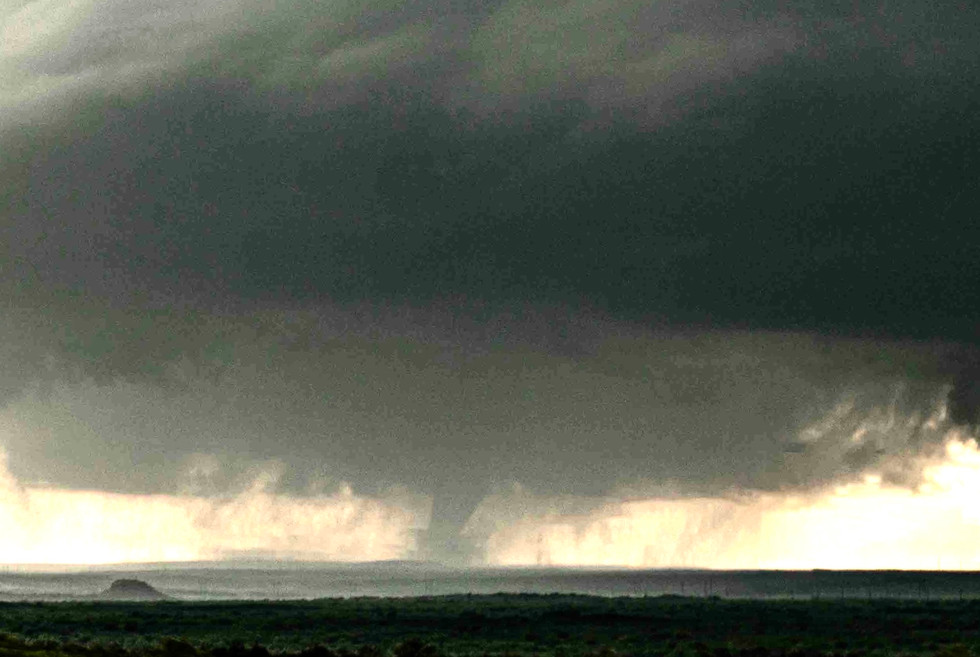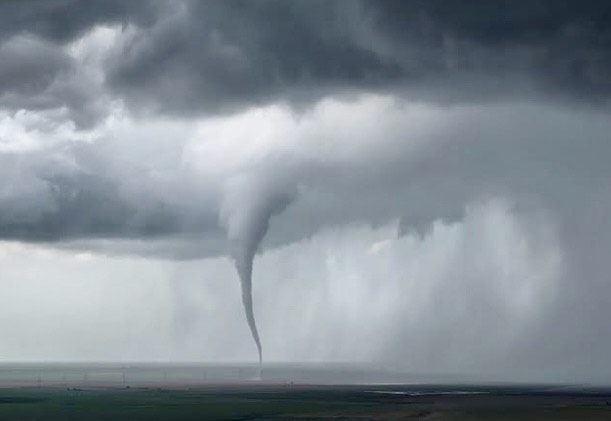Twisted Texas Weather Intrigues Writer
- Jim Clash

- Jul 10
- 4 min read

It’s one thing to see a photo of a tornado, yet another to see the real thing.
I grew up in Laurel, the mid-Atlantic part of the country. It’s rare for twisters to touch down in that area. The big worry is hurricanes, the remnants of which often travel up the coast from the south. These remnants can and will do damage, even as far up north as Maryland.
I remember Hurricane Agnes in particular. It wreaked havoc on the entire East Coast in 1972. In Laurel, the swimming pool near the Patuxent River where I lifeguarded summers was destroyed, as were several homes in the area.
Perhaps it’s that absence of tornadoes that first fueled my interest in them. I’m an extreme nature buff, having traveled to Nazare, Portugal, to experience 60-foot waves on a jet ski; helicoptered over the active Hawaiian volcano Kilauea to see molten lava; viewed a total solar eclipse from 30,000 feet up in a fighter jet. So, when I discovered that organized groups in the southern and midwestern states chase tornadoes, I was intrigued.
In 2023, I joined Rachel Sanner of Tornado Titans for one such tour. Over three days in mid-June, we hunted for the elusive beasts in Texas, Oklahoma, New Mexico, and Colorado. While we saw a number of stunning motherships and supercells—the enormous structures that produce twisters—we never saw the real thing. At the time, I made a mental note to return again and try to seal the deal.
This past spring, I flew to Dallas to join up with veteran storm-chasers Tim Bovasso and Jeff Anderson to give it another go. First, Anderson took me near Joplin, Missouri, on a promising day and we managed to get close to two rain-wrapped tornadoes, interesting experiences in themselves. But nothing photogenic presented itself. Rain-wrapped storms tend to hide their funnels. My main goal, of course, was to see and photograph a classic tornado cone, like one you might see in the popular Twister movies.
The forecast for the following few days looked decent again, but this time in west Texas. So early on the morning of April 24, we made our way from Dallas to Silverton. During the six-hour drive, I had a chance to chat with Bovasso. He cautioned me on how rare it is to see a tornado period, especially a photogenic one. I already knew that sad fact from my experience with Sanner in 2023.
A supercell produced a dangerous wedge and stovepipe tornado near Matador and Silverton, Texas on April 24. Jim Clash was there to document the unpredictable weather.
In Silverton, we positioned ourselves near a developing wall cloud at the bottom of a supercell. That’s the dark area closest to the ground most likely to produce a twister. Then it was a waiting game, frustrating at times. Bovasso and Anderson kept getting excited, then shaking their heads in despair, as they watched the wall cloud and the weather apps on their cell phones.
After about an hour, the decision was made to reposition southeast of the moving supercell to continue to have good views. As we packed up our cameras and headed south on Highway 207, Bovasso glanced out of the car’s back window. Surprisingly, a tornado began to form. Anderson immediately turned the car around, and, as we headed back north, the tiny dark nub at the far left of our wall cloud began to drop. “Tornado, tornado,” Bovasso yelled out.
As the vortex snaked further toward the ground, I couldn’t believe what was unfolding. There was no sound, no rain, and no hail as was with the rain-wrapped tornadoes we had witnessed in Joplin a few days earlier, just a regal white cone forming majestically against the sky. We finally stopped the car and got out, furiously snapping photos and video. It was surreal.
As quickly as it had appeared, the funnel, a rare anticyclonic type, weakened and evaporated into a thinning rope, then disappeared altogether. Poof. The whole life of the thing was about six minutes. But what a six minutes! The experience reminded me of my encounters with the elusive Northern Lights in Iceland and Alaska: here one minute, gone the next.
We then hightailed it back southeast, toward Matador, as softball-sized hail started falling and broke the windshields of storm-chaser cars just a few minutes behind us. We continued to watch the supercell, only from farther away and at a different angle.
Just as with the first twister, a nub started dropping from the wall cloud, shaped more like a stout stovepipe this time. Bovasso said that, while not as pretty as our first tornado, it was more powerful with multi-vortices, classified as “strong” by the weather services.
As we watched it grow, it quickly spread out at its base, eventually morphing into a massive wedge tornado, estimated at over a quarter mile in width. (A wedge tornado is wider than it is tall.) The structure is serious business, Bovasso said. Three storm-chasers for the Discovery Channel were killed in 2013 in a monster wedge known as El Reno.
We tracked our wedge until it became rain-wrapped. After that, we photographed some spectacular lightning as darkness fell but we were downright giddy at having seen three photogenic twisters in one day: an anticyclonic laminar cone, a large stovepipe, and a wedge. Even Bovasso, who has witnessed more than 100 tornadoes, was ecstatic, saying that the day had been one of the best in his more than a decade of chasing.
If anybody wants to see Mother Nature in its most raw but beautiful form, find a storm-chasing group. There are plenty online. Some charge money. Other chasers, like Bovasso, do it for passion and to see the looks on folks’ faces (like me) when they see a tornado for the first time. High season is April through mid-June.
Jim Clash immerses himself in extreme adventures for Forbes magazine. He graduated from Laurel High School in 1973. His latest book is Amplified: Interviews With Icons of Rock ‘n’ Roll.










Comments